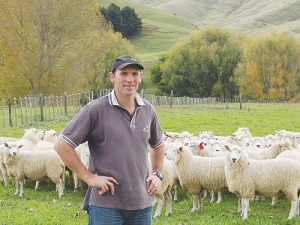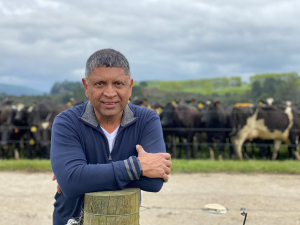Although it has been variable across the country, recent rain has brought confidence to many farmers, says DairyNZ general manager extension, Andrew Reid.
"There was wide prediction about the effects of El Nino during summer bringing dry drought conditions to large parts of the country," he told Rural News.
"That was certainly the case in December with many parts of the country showing signs of drought early on. Recent rain has alleviated a lot of those fears. However, coastal Bay of Plenty and large parts of the eastern South Island are still suffering some of the consequence of that time.
"The drying wind has been a point of concern but a lot of it has been alleviated by recent rain over the past couple of weeks over most regions."
But while he is hearing from the regions that January is okay, the farming sector is not out of the woods yet, depending on what February and March bring. That determines the shape of the rest of the season for farmers.
The rain has alleviated immediate concerns in Waikato, Northland, Taranaki and most of the North Island.
"Of concern are the Canterbury, North Otago and northern Southland areas. They are still dryer than normal."
Reid says grass growth is reasonable for the time of year. It now depends on the season from now until mid-March.
For the best part, across the country grass growth would be above normal on a daily growth rate. Regions that suffered through the spring are in catch-up mode, particularly Southland, West Coast and Taranaki.
Production is down on last year but by how much will depend on the weather. "The prediction before Christmas was that we could be up to 6% behind, but that was on the basis of having a dry summer. If this rain keeps up we may catch up some of that before the season ends," he says.
DairyNZ senior developer for productivity Kim Mashlan says DairyNZ reviewed pasture growth data for the three strongest previous El Nino years – 1972-73, 1982-83 and 1997-98 at up to about 150 locations. Obviously some were not affected by El Nino as much as others.
The East Coast is expected to be worse than the West Coast in dryness during these events.
The results showed an average of 2-3 tonnes less feed per hectare was produced during El Nino seasons in the affected regions.
They are not as yet making any predictions on the current data for this El Nino. Some regions have had rain – certainly the Waikato has. Other regions, even though they have had some rain, have higher winds drying things out.
"Then there are some regions like North Canterbury which haven't had any rain. So some regions are starting to see the impact of El Nino quite strongly already. With others it may still be to come," Mashlan told Rural News.
She recommends farmers write a management plan containing trigger points for decisions as time progresses. Options such as once-a-day milking, culling cows and pregnancy testing for empties to get surplus stock off the farm should be planned ahead of time so that, hopefully, they reduce stress.
"We encourage people to keep checking the forecasts – weather forecasts and the pasture growth forecast available through DairyNZ and Farmax."
Beef + Lamb NZ chairman James Parsons says although he can't speak for the lower North Island or South Island, the upper North Island is largely in a good state moisture-wise with the recent rains. His own property at Dargaville has benefited from 50mm over the new year, then 20mm more the following Saturday.
"The farm has greened up and is looking good," he told Rural News.



















